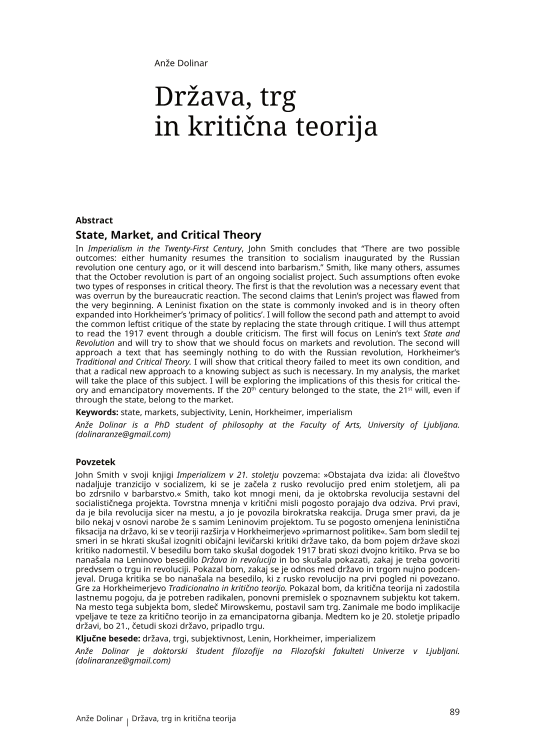In Imperialism in the Twenty-First Century, John Smith concludes that “There are two possible outcomes: either humanity resumes the transition to socialism inaugurated by the Russian revolution one century ago, or it will descend into barbarism.” Smith, like many others, assumes that the October revolution is part of an ongoing socialist project. Such assumptions often evoke two types of responses in critical theory. The first is that the revolution was a necessary event that was overrun by the bureaucratic reaction. The second claims that Lenin’s project was flawed from the very beginning. A Leninist fixation on the state is commonly invoked and is in theory often expanded into Horkheimer’s ‘primacy of politics’. I will follow the second path and attempt to avoid the common leftist critique of the state by replacing the state through critique. I will thus attempt to read the 1917 event through a double criticism. The first will focus on Lenin’s text State and Revolution and will try to show that we should focus on markets and revolution. The second will approach a text that has seemingly nothing to do with the Russian revolution, Horkheimer’s Traditional and Critical Theory. I will show that critical theory failed to meet its own condition, and that a radical new approach to a knowing subject as such is necessary. In my analysis, the market will take the place of this subject. I will be exploring the implications of this thesis for critical theory and emancipatory movements. If the 20th century belonged to the state, the 21st will, even if through the state, belong to the market.




